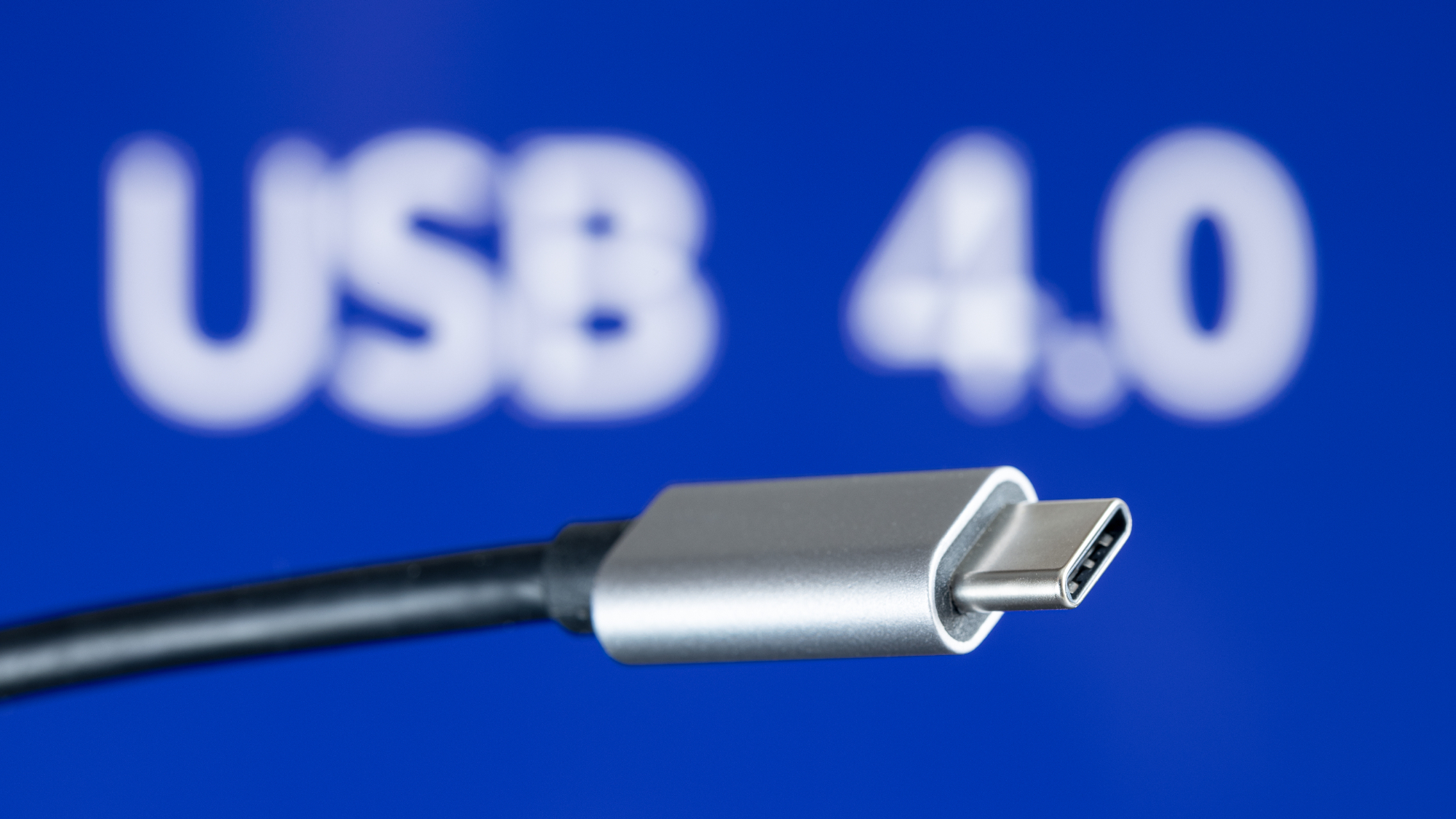ASMedia and Via Labs are developing USB4 v2 controllers, still 18 months away from launch

With its 80 Gb/s transfer rate and a 120 Gb/s boost mode for high-performance displays, USB4 version 2 represents a major breakthrough in terms of connectivity. Unfortunately, for now, there are only two USB4 v2 controllers for PCs on the market: one from Apple, another from Intel (the JHL9580), so there is almost no way to add USB4 v2 to AMD platforms. Good news: this is going to change, as both ASMedia and Via Labs have revealed to Tom's Hardware that they are working on controllers set to launch in the next two years.
At Computex, we met with representatives from ASMedia and Via Labs, two well-known makers of external controllers for various connectivity standards. In fact, ASMedia develops chipsets for AMD. Both companies are working on USB 4 v2 controllers, yet ASMedia plans to release its chip towards the end of 2026, while Via Labs intends to launch its USB 4 v2 solution sometime in 2027. For now, it is not clear whether ASMedia and Via Labs are also developing USB4 v2 PHY in-house or plan to use an off-the-shelf offering from, say, Synopsys.
Releasing controller chips does not necessarily mean their immediate adoption by actual makers of motherboards and laptops. The controllers must pass certification procedures by the USB-IF and PCI-SIG, and then they must be qualified by motherboard and/or PC makers, which takes time.
That said, it is reasonable to expect PCs and motherboards with ASMedia’s USB4 v2 controllers to be introduced at CES 2027 and hit the market in early 2027. Until then, USB4 version 2 with an 80 Gb/s transfer rate and 120 Gb/s boost mode will be a prerogative of Apple and Intel-based machines.
Such a long development cycle for USB4 v2 controllers should not come as a surprise. USB4 version 2.0 represents a significant upgrade to USB4 by doubling the maximum symmetrical bandwidth from 40 Gbps to 80 Gbps and enabling a 120 Gbps asymmetric mode (3 transmit lanes, 1 receive lane) for high-resolution display use cases. But performance is perhaps not the key difference between USB4 and USB4 v2, as the latter introduces a new signaling method — PAM-3 — that transmits more bits per cycle than the NRZ encoding used in USB4 while still operating over existing certified USB-C cables. However, usage of PAM-3 comes at a price as encoding and decoding get significantly more tricky and demanding in terms of resources. The protocol support of USB4 v2 is also enhanced: it can tunnel faster protocols like PCIe 4.0 and DisplayPort 2.1, whereas USB4 is limited to PCIe 3.0 and DisplayPort 1.4a. Adding all these features and making sure they work takes a long time, which is why ASMedia and Via Labs will be two or three years late to market compared to Apple and Intel.
| Row 0 - Cell 0 | USB4 | USB4 v2.0 | Thunderbolt 4 | Thunderbolt 5 |
Max Bandwidth (Bi-dir) | 40 Gbps | 80 Gbps | 40 Gbps | 80 Gbps |
Max Bandwidth (Uni-dir) | 40 Gbps | 120 Gbps (3:1 asymmetric) | 40 Gbps | 120 Gbps |
Encoding | NRZ | PAM-3 | NRZ | PAM-3 |
Connector Type | USB-C | USB-C | USB-C | USB-C |
Cable Compatibility | Active/passive for 40 Gbps | Passive 40 Gbps cables usable for 80 Gbps | Same as TB3, requires certified cables | Requires certified cables for 80/120 Gbps |
Display Support | DisplayPort 1.4a (via tunneling) | DisplayPort 2.1 (via tunneling) | DisplayPort 1.4a / 2.0 (optional) | DisplayPort 2.1a |
Data Protocols (Tunneling) | USB 3.2, PCIe 3.0, DP 1.4a | USB 3.2, PCIe 4.0, DP 2.1 | PCIe 3.0, USB 3.2 Gen 2x2 | PCIe 4.0/5.0, USB 4, DP 2.1a |
PCIe Support | PCIe 3.0 x4 (32 Gbps) | PCIe 4.0 x4 (64 Gbps) | PCIe 3.0 x4 (32 Gbps) | PCIe 5.0 x4 |
Power Delivery (PD) | Optional (up to 100W) | Up to 240W (PD 3.1) | Mandatory (up to 100W) | Mandatory (up to 240W) |
Backward Compatibility | USB 3.2, 2.0 | USB4, USB 3.2, 2.0 | TB3, USB4, USB 3.2 | TB4, TB3, USB4 v2.0, USB 3.x |
Announced | 2019 | 2022 | 2020 | 2023 |
First introduced | 2020 | 2024 | 2020 | 2024 |
Perhaps, the only connectivity standard that is harder to implement on both the silicon and system levels is Intel's Thunderbolt 5. TB5 sits on top of USB4 v2 (in fact, Intel requires adopters of TB5 to first certify their products with the USB-IF for USB4 v2 compliance), adopts similar signaling technology, and offers equivalent 80 Gbps bi-directional throughput with support for the same 120 Gbps asymmetric mode under its 'Bandwidth Boost' feature. However, it adds strict requirements for system builders: mandatory support for PCIe 4.0/5.0, DisplayPort 2.1a, and guaranteed 240W power delivery through certified cables and devices. It also supports advanced docking and daisy-chaining configurations with precise guarantees that USB4 lacks.
Follow Tom's Hardware on Google News to get our up-to-date news, analysis, and reviews in your feeds. Make sure to click the Follow button.
Get Tom's Hardware's best news and in-depth reviews, straight to your inbox.

Anton Shilov is a contributing writer at Tom’s Hardware. Over the past couple of decades, he has covered everything from CPUs and GPUs to supercomputers and from modern process technologies and latest fab tools to high-tech industry trends.
-
thestryker With the amount of development time left I wonder if this means they're designing it as a PCIe 5.0 controller like what they did with their USB 4 controller being PCIe 4.0.Reply -
Jame5 No, USB 5.Reply
That's what they should do. Double the bandwidth? New major version. Don't screw with people having to guess if it's new or not. Just USB 5. You know it's 2x as fast as USB 4. Done.
Following @thestryker 's point: It would be like calling PCIe5.0 "PCIe4.0 v2" when they doubled the bandwidth. -
bit_user Not that anyone will see this, but thanks to Anton for the informative article. I haven't tracked these developments very carefully, so I especially appreciate details like the differences between 4v1 and 4v2, as well as vs. TB5.Reply -
astarbird Something else must have happened because on 10-16-25 the ROG XBOX ALLY X is releasing with USB4 V2.a/cHF8XRpReply -
FL Guy Agree, thanks Anton for a realistic update on the timeframe for rollout for USB4 V2 support chips.Reply
I also feel that no one on the development side of peripherals for AMD based systems is or was listening to user comments & needs on this point.
Fwiw, as an enthusiast creative user who would definitely have brought new AMD based laptop AND desktop systems that included support for USB4 V2 and/or TB5 if it was available, I find this timeline for development of support on the AMD system side deeply frustrating & disappointing.
Please don't tell me there is no application for it - I don't agree with this at all - I would have bought systems that included this a year ago, and be using it today if it was available.
The timeline for support of USB4 V2 and/or TB5 on AMD systems looks like approx 3-5 years behind availability of TB5 on Intel & apple systems. As a former system engineer/mgr/ and tech roadmap contributor at HW & systems development companies, I see no technical reason why this support should be more than 12-18 months behind TB5 at most, and could easily have been much closer aligned.
I view support for these options for high bandwidth connectivity as an important feature for creators (apparently Apple agrees).
Apparently however this was simply a priority on the AMD system & support I/O component side, which is disappointing, and seems like a missed opportunity needlessly driving some users to Intel or Apple, or perhaps a needless HW churn for AMD system users when higher bandwidth I/O actually becomes available for AMD systems. It's beginning to look like maybe that was the point.
At this point, it is what it is though.